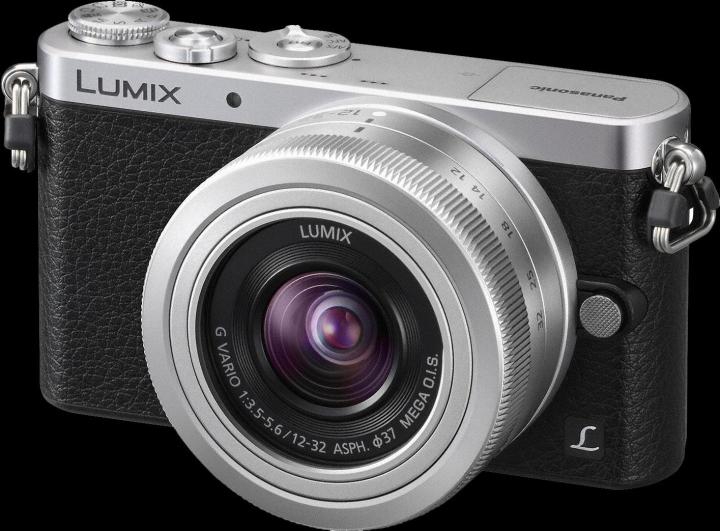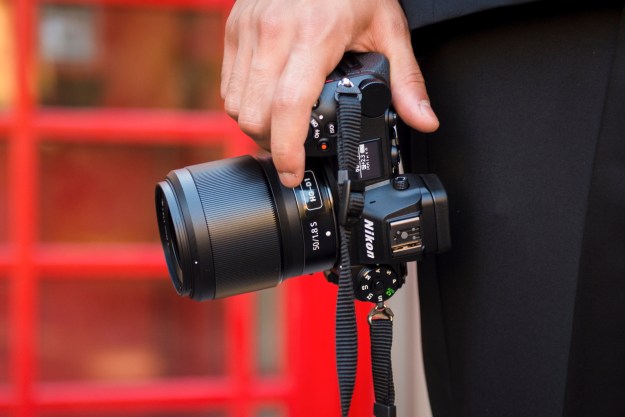
There’s something appealing about the retro look cameras are sporting these days, which suggests good design is timeless. Take a look at the new Lumix GM1 from Panasonic. With its clean design of metal and leather surfaces, it harks back to the olden days of rangefinder film cameras. Of course, as you know, the GM1 is technologically modern in every way, and this compact Micro Four Thirds shooter is also one of the smallest interchangeable lens cameras around. Yes, you can get beauty and brawns out of a small package.
How small? It’s around the same size as a small point-and-shoot with a fixed zoom lens. To achieve this form factor, Panasonic redesigned the shutter mechanism with a motor instead of a spring. This change alone allowed for 80 percent in size reduction. Panasonic also said by using magnesium alloy as the main frame, it could attach the sensor directly to the frame.
The GM1 features a 16-megapixel Live MOS sensor and the Venus image processor, with an ISO range of 200-25,600. Panasonic says the photodiode in each pixel has been enlarged to improve color saturation, and the sensor has higher sensitivity with less noise generated. The autofocus system is contrast detection, which Panasonic claims is fast and accurate by “exchanging digital signal between the camera and the lens at maximum of 240 frames per second.” There’s also a focus peaking option for more control when in manual focus mode. For video, the GM1 shoots Full HD 1080 at up to 60i resolution with Dolby Digital audio. (Full specs here.)
There’s no viewfinder due to its size, and the design of the camera also eliminates a hot shoe to attach any accessories. Besides the simple dials on top, all functions are controlled through the 3-inch touch-capable LCD (1,036k dots). Wi-Fi is built in, which can be used for image transfer and uploads via a network or an app for iOS and Android; the app can be used to control the camera remotely. If you’re photographing in a place where you can’t make any noise, the camera has a Silent Mode that switches to electronic shutter while turning off all sound, AF assist lamp, and flash. Users stepping up from a point-and-shoot will find Panasonic’s Intelligent Auto Plus and Creative Control modes for automatic shooting.
To complement the small camera, Panasonic also introduced the Lumix G Vario 12-32mm F3.5-5.6 retractable lens with optical image stabilization, which will come as a kit lens for the GM1. It looks like a pancake fixed lens, but extends out when the camera turns on. Together, the GM1 makes a great camera for street photography or when traveling, although it’s not the strongest M4T lens out there. You can attach other Micro Four Thirds lenses, but you’ll lose the compactness of the overall form factor. And with a camera this small, holding it with a larger lens will be a challenge.
With smartphones obliterating point-and-shoots, camera makers are looking for ways to enhance their offerings in the compact sector. The GM1 looks like one way Panasonic is facing this challenge. The specs sound impressive, but it’ll be exciting to see how well it actually performs.
The camera will retail for $750 with the 12-32mm lens. The lens is available on its own for $350.
Editors' Recommendations
- Canon EOS R5 vs. Sony A7S III vs. Panasonic S1H: Best full-frame for video?
- Leica SL2 vs Panasonic Lumix S1R: Two L-mount leaders with one big difference
- The best Micro Four Thirds lenses
- In the zoom-versus-speed debate, Panasonic’s 10-25mm f/1.7 gives you both
- Panasonic Lumix S1 vs. Canon EOS R: A full-frame mirrorless matchup


